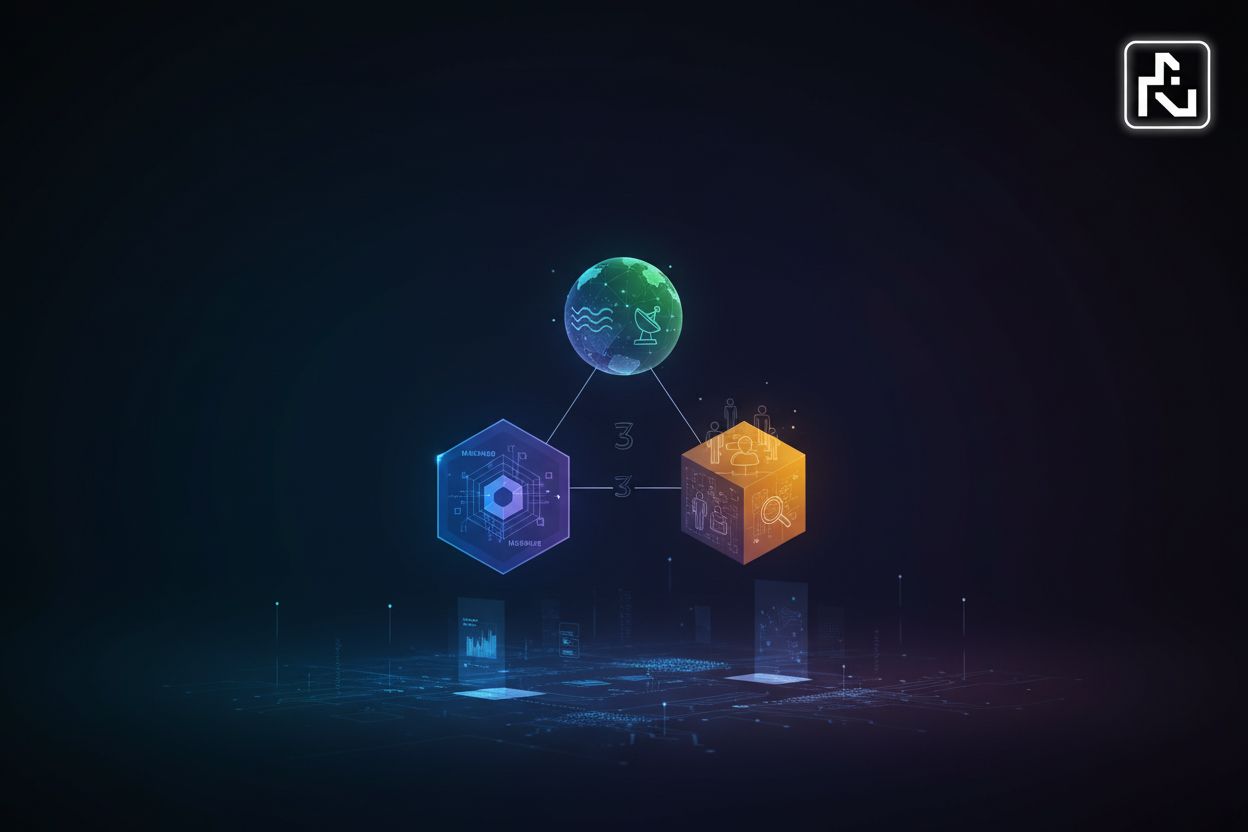Unlocking Customer Experience: How Composable CX Platforms Drive Digital Transformation
The Rise of Composable Customer Experience (CX)
Composable Customer Experience (CX) is revolutionizing how businesses interact with their customers. Are you ready to dismantle the traditional, rigid systems and embrace a more adaptable approach?
Composable CX involves building customer experiences from independent, best-of-breed components. Instead of relying on a single, monolithic platform, businesses can select and integrate specialized solutions for each CX function. This modular approach contrasts sharply with traditional systems, which often lock companies into a single vendor's ecosystem.
Composable CX is gaining traction across industries, as businesses seek greater agility and control. It allows them to adapt quickly to changing customer needs and market trends.
- Increased Agility: Composable CX allows businesses to quickly adapt to new trends.
- Best-in-Class Solutions: Companies can leverage specialized tools for specific CX tasks. For example, a retailer might use one vendor for its CMS (Contentful) and another for its search functionality (Algolia).
- Reduced Vendor Lock-in: Businesses gain more control over their tech stack. Unexpected acquisitions, engineering priority changes, cost increases, and decreased innovation are all risks of using a single provider, according to James Cox, SVP Marketing at LumenVox (Composable Customer Experience Is the Future).
- Improved Scalability: Modular systems can be scaled more efficiently than monolithic ones.
Composable CX is a key enabler of broader digital transformation efforts. It allows businesses to adopt a more customer-centric approach, aligning CX strategy with overall digital goals. Embracing a modular mindset helps organizations plan for multiple scenarios, adapting and improvising as needed.
Enterprises are shifting from rigid architectures to composable ones to meet evolving customer expectations. This shift is essential for staying competitive and delivering exceptional customer experiences.
Composable CX offers a path toward greater agility and innovation. Next, we'll explore the specific benefits of composable CX in more detail.
Key Components of a Composable CX Platform
Composable CX platforms are transforming customer interactions, but what exactly are the building blocks that make them so effective? Let's break down the key components that drive this digital revolution.
One core component is headless architecture. This approach separates the front-end (presentation layer) from the back-end (business logic and data). This decoupling enables consistent experiences across various channels and devices. Moreover, it allows for faster experimentation and innovation in the front-end without disrupting back-end systems.
Examples of headless solutions include headless CMS platforms like Contentful and headless commerce platforms such as commercetools. Headless architecture offers increased agility, allowing businesses to quickly adapt to changing customer expectations.
Another critical component is Packaged Business Capabilities (PBCs). These are independent, self-contained modules that deliver specific business functionalities. Think of them as building blocks that can be assembled to create customized CX solutions.
Examples of PBCs include product information management (PIM), order management systems (OMS), search, and personalization engines. APIs are essential for seamless integration between PBCs. Businesses can then select the best tools for their unique needs.
Data is the lifeblood of personalized and relevant CX. Seamless data flow between different components of the CX platform is therefore crucial. Customer data platforms (CDPs) and data warehouses play a vital role in creating unified customer profiles.
According to Composable.com, innovations have made data integration more reliable, enabling the building of a 360-degree view of the customer across platforms.
Understanding these key components is essential for harnessing the power of composable CX. Next, we will delve into the specific benefits this approach offers.
Benefits of Implementing a Composable CX Platform
Composable CX platforms are changing the game, but what tangible advantages do they bring to the table? Let's explore how these platforms can revolutionize your digital strategy.
One of the most significant benefits is enhanced agility and flexibility. Composable CX platforms allow businesses to respond quickly to changing market conditions and customer expectations. You can easily add or replace components without disrupting the entire system.
This flexibility supports experimentation and A/B testing, allowing you to optimize CX continuously. Think of it as having building blocks that you can rearrange to suit your evolving needs.
Composable CX enables improved personalization and relevance. By leveraging customer data, you can deliver personalized experiences across all touchpoints. This includes tailoring content, offers, and interactions to individual customer needs and preferences.
This level of personalization can significantly increase customer engagement and loyalty. For instance, a financial institution could offer tailored investment advice based on a customer's financial goals and risk tolerance.
Another key advantage is increased cost-effectiveness. Composable platforms help you avoid the high upfront costs and long-term commitments associated with monolithic platforms. You only pay for the components and functionalities that you need.
The modular architecture also reduces maintenance and operational costs. This approach allows companies to set pricing based on their needs, not just the vendor.
Consider a healthcare provider using a composable CX platform. They can quickly integrate a new telehealth service to meet increased demand for remote consultations. Similarly, a retailer can add a new personalization engine to enhance product recommendations during peak shopping seasons.
By breaking free from monolithic systems, your business gains the power to tailor every customer interaction. Next, we will dive into how composable platforms streamline operations and boost efficiency.
Overcoming Challenges in Composable CX Implementation
Implementing a Composable CX platform isn't always smooth sailing; many organizations face significant hurdles. What are the common pitfalls, and how can you navigate them effectively?
One of the primary challenges is the integration complexity that arises from combining various components from different vendors. Each component might have its unique data format and communication protocol. Ensuring seamless interaction requires careful planning and execution.
- APIs play a crucial role in bridging these gaps. Standardized data formats, like JSON or XML, are essential for smooth data exchange.
- Integration Platform as a Service (iPaaS) solutions can simplify this process. They offer pre-built connectors and tools to manage data flow between different systems.
- For example, a retailer might struggle to integrate its new personalization engine with its existing e-commerce platform due to incompatible APIs.
Maintaining data privacy and security across all components is another critical concern. A composable CX platform involves handling sensitive customer data across multiple systems. This increases the risk of data breaches and compliance violations.
- Robust data governance policies are essential. These policies should define data access controls, encryption standards, and data retention policies.
- Compliance with regulations like GDPR and CCPA is also crucial. Companies must ensure that all components of their CX platform adhere to these standards.
- For instance, a healthcare provider must ensure that its composable CX platform complies with HIPAA regulations to protect patient data.
The successful implementation of a composable CX platform also requires specific skills and expertise. Organizations need professionals who understand headless technologies, APIs, and cloud-based systems.
- Collaboration between different teams is vital. Marketing, IT, and data science teams must work together to ensure the platform meets business requirements.
- A culture of experimentation and continuous improvement is also important. Companies should be willing to test new components and adapt their CX strategy as needed.
- Internal cultural change is critical. Companies must foster agility, cross-functional collaboration, and incremental rollout strategies.
Overcoming these challenges requires a strategic approach and a commitment to continuous improvement. Next, we'll look at how to measure the success of your composable CX initiatives.
Building a Composable CX Strategy: A Step-by-Step Guide
Building a composable CX strategy is like constructing a custom-tailored suit; each piece must fit perfectly to achieve the desired outcome. What steps should you take to ensure your composable CX platform delivers exceptional customer experiences?
Begin by defining clear business goals. What do you want to achieve with your composable CX platform? Increased customer satisfaction, higher conversion rates, or improved customer retention? Identify the key customer journeys and touchpoints that matter most.
Next, assess your current technology stack. Identify any gaps or limitations that a composable approach can address. For example, a healthcare provider might find its current system lacks the flexibility to quickly integrate new telehealth services.
Carefully evaluate different vendors and solutions based on your specific needs. Prioritize best-of-breed solutions for key CX functions. A retailer might choose one vendor for its personalization engine and another for its customer support chatbot.
Ensure compatibility and seamless integration between components. APIs are crucial for enabling different systems to work together effectively. Consider a financial institution integrating a new fraud detection system with its existing customer data platform.
Develop a phased implementation plan to minimize disruption. Start with a pilot project to test the waters before rolling out the platform across the entire organization. Leverage APIs and integration tools to connect different components of the CX platform.
Thoroughly test and validate the integrated CX platform. Ensure that all components work together seamlessly and that data flows correctly between systems. A property management company might start by integrating a new tenant portal with its existing accounting system.
By following these steps, businesses can create a composable CX strategy that delivers exceptional customer experiences. Next, we'll explore how to measure the success of your composable CX initiatives.
Future Trends in Composable CX
The future of Composable CX is dynamic. Expect to see significant advancements in AI, low-code/no-code platforms, and the convergence of customer and employee experiences.
AI and machine learning are poised to revolutionize Composable CX platforms. These technologies are being integrated to enable personalization, automation, and advanced analytics. Retailers, finance and healthcare are all industries that can leverage AI to personalize their services.
- AI-powered capabilities will allow businesses to offer more relevant experiences. For example, AI can analyze customer data. It can also classify and categorize data, automate SEO-optimized product descriptions, flag inconsistencies, and recognize images.
- Machine learning algorithms can predict customer behavior. This allows for proactive optimization of CX strategies. For example, an e-commerce company could use machine learning to predict which customers are likely to abandon their carts. They can then offer targeted incentives to encourage them to complete their purchases.
- AI can also be used for data classification and automated SEO-optimized product descriptions.
Low-code/no-code platforms are democratizing CX development. These platforms empower business users to create and customize CX applications, which accelerates the development and deployment of new CX experiences.
- Business users can build and modify applications without needing extensive coding knowledge. This enables faster experimentation and innovation.
- With low-code/no-code platforms, businesses can quickly adapt to changing customer needs. They can also implement new features.
- The rise of low-code/no-code platforms aligns with the trend toward greater agility and flexibility in CX management.
The connection between customer experience (CX) and employee experience (EX) is gaining recognition. Companies realize that happy, engaged employees lead to better customer interactions.
- Integrating CX and EX platforms can provide a unified view of the customer and employee journey. This integration empowers employees with the tools and information they need to provide personalized service.
- By providing employees with the right tools and information, companies can improve both CX and EX.
- This holistic approach acknowledges that employee satisfaction directly impacts customer satisfaction.
As Composable CX continues to mature, measuring its impact becomes increasingly important. Next, we'll look at how to measure the success of your composable CX initiatives.
Composable CX in Action: Use Cases and Examples
Composable CX isn't just a buzzword; it's a tangible strategy that's reshaping customer interactions across industries. But how does this modular approach translate into real-world success?
Composable CX platforms are enabling businesses to craft personalized e-commerce experiences. By leveraging independent components, companies can deliver tailored product recommendations, offers, and content. For instance, a retailer might use one component for its product catalog and another for its AI-driven recommendation engine.
- This approach allows for dynamic adjustments based on customer behavior.
- It also facilitates A/B testing to optimize for conversion rates and customer lifetime value.
Seamless customer service across multiple channels is another area where composable CX shines. Instead of siloed systems, businesses can empower customer service agents with a unified view of the customer journey.
- This allows agents to resolve issues quickly and efficiently.
- It also provides for personalized interactions.
- For example, a financial institution could use a composable platform to integrate data from its CRM, contact center, and mobile app.
Composable CX platforms enable the creation of highly targeted marketing campaigns. By leveraging customer data from various sources, businesses can deliver relevant messages across different channels.
- This includes using AI and machine learning to optimize campaign performance.
- It also includes measuring the impact of marketing campaigns on customer engagement and revenue, ensuring a closed-loop system.
Composable CX is changing the way businesses approach customer experience. By embracing a modular approach, organizations can unlock agility, personalization, and cost-effectiveness.





